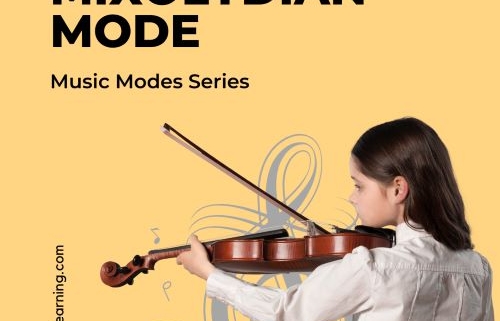Mixolydian Mode: The Music Modes
The Mixolydian mode is one of the seven main modes in Western music, and it has a unique and bluesy sound that sets it apart from other modes. It’s characterized by a specific pattern of whole and half-steps and is associated with dominant chords, giving it a laid-back and bluesy feel.
Mixolydian Mode Formula
The Mixolydian mode is defined by the pattern of whole and half-steps, starting from the fifth note of a major scale. The formula follows these intervals: W – W – H – W – W – H – W (W = “whole step” or “tone” and H = “half step” or “semitone”).
When played over dominant chords, the Mixolydian mode creates a sense of tension and release, making it a popular choice for blues and rock music.
Example: C Mixolydian Mode

Dominant Seventh Interval
One of the most distinctive features of the Mixolydian mode is its dominant seventh interval, which gives it a bluesy and relaxed sound. This is in contrast to the Ionian mode, which has a major seventh interval and a brighter and happier sound.
Key Signatures & Example Songs
In terms of key signatures, the Mixolydian mode is associated with dominant chords. When played over dominant chords, the Mixolydian mode creates a sense of tension and release, making it a popular choice for blues and rock music. Many famous pieces of blues and rock music are written in the Mixolydian mode, including the music of blues legends like B.B. King and rock icons like Led Zeppelin.
It’s important to note that the Mixolydian mode is not limited to just blues and rock music, it can also be played in other genres, where it takes on a different sound and character. In jazz music, for example, the Mixolydian mode is often used for soloing and improvisation, where it creates a sense of swing and swing-like phrasing.
Understanding the Mixolydian Mode
To understand the Mixolydian mode, it’s essential to practice playing it on an instrument or singing it. Start by playing the scale ascending and descending, then try playing simple melodies using only the notes of the Mixolydian mode. You can also try playing chord progressions using the Mixolydian mode and experiment with different rhythms and dynamics.
Summary
In conclusion, the Mixolydian mode is a versatile and essential mode for musicians of all levels. Whether you’re a beginner just starting to explore modes or an experienced musician looking to expand your knowledge, taking the time to learn and understand the Mixolydian mode is a valuable investment. By incorporating the Mixolydian mode into your playing, you’ll be able to create music with a laid-back and bluesy feel that’s sure to captivate your listeners.
Learn the Mixolydian Mode with an Expert Music Teacher
Get a better understanding of the Mixolydian mode as well as the other six main modes with an expert music teacher at Hodis Learning & Music. Our private, 1-on-1 lessons, provide an efficient and effective way to study music theory and hone your skills. Learn more or schedule your first session today by calling or emailing us.



